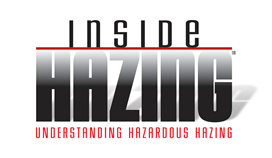Why
Hazing is a tradition that is intentionally passed on within an organization that emphasizes a specific rite of passage. It is used to maintain the pecking order, to discipline, and prove that the victim is worthy of being accepted by the group. Some research validates the concept that working as a team increases bonding. However, hazing, which by definition, involves harm, is not necessary in order to create a cohesive group.
Hazing, like a virus, morphs and adapts to its environment. It is able to thrive because of the “code of silence” which always exists in groups that haze. Most members who haze, have themselves been hazed. They feel that they have the right and duty to do onto others what was done to them. I believe that there may be some unconscious processes that allow the perpetrator to regain a piece of themselves that was lost when they were hazed.
The purpose of this film is to stop this from ever happening again and to save lives.
Documentary/Educational Film "Breathe. Nolan, Breath", directed by Daniel E Catullo III and produced by City Drive Studios, West Virginia University, ANYONE Collective and Sugar Studios. Original score by Richard Patrick. The film tells the story of WVU student Nolan Burch, who tragically died in November of 2014 from a hazing incident.
The Code of Silence
“The code of silence is an unwritten understanding among any group of people not to tell if something happens that may be illegal, immoral or unethical….Sometimes intimidation is used to reinforce the code….The power behind the code of silence is based on fear, and this fear makes us not want to break the silence.…Sometimes the fear is real and intimidation and threats are used. Sometimes the fear is implied, such as the fear of retribution or social isolation.” (Preventing Hazing, Lipkins, S. 2006, p.87)
All Greek organizations, were begun as groups that emphasize the importance of secrecy. Typically, everything about the initiation process is secret, as are handshakes, nicknames and other information. Communications, both overt and covert, are given in which the members of the organization make it quite clear that everyone participating must not share any information about the group or process. This serves many purposes. For one thing, it helps bond the group. The identity of the group, and feeling like you are part or potentially a member of the group, satisfies a psychological need to be identified with, and protected by the tribe/group. In addition, there is a conscious and unconscious connection to the feeling of family. Often this connection is noticeable when members refer to themselves as “sisters, big sisters, little sisters, etc.” This implies a sense of safety and security. And, a well-known motto in the field of hazing is: “what goes on in the family (locker room, etc.) stays in the family.” Therefore, the code of silence is invoked and serves to protect everyone from exposure. Once this “immunity” has been established, the scene is set for hazing to occur.
The “Code of Silence” is extremely important in organizations that have hazing rituals. Before traditions even begin, a “cover story” is often taught to all the members and the potential victims, so that, if an authority intervenes the cover story will be in place, protecting the organization as well as the individuals involved.
Institutionalized Code of Silence
Institutions, organizations and corporations can, in and of themselves, create structures which inhibit members from confronting harassment and encourage people to accept the status quo, regardless of how much it may harm them. “Black Lives Matter” and the “Me Too” movement have highlighted how the Police and Hollywood have maintained an “institutionalized code of silence.” I use the phrase “institutionalized code of silence,” when an organization uses the code of silence to protect itself. In other words, it is not an individual acting alone, but a method of operation perpetrated by the institution.
The Second Hazing
The Second Hazing is a term I coined to explain the reaction that much of a community has towards the victims and their supporters. Typically, 85% of the community support the status quo, meaning the coach and school district, or the fraternity. Those supporting the perpetrators say: “you are a wimp, or I took it why can’t you?” They diminish the hazing and oust the victims and supporters, labeling them as weak. Often the victim does not report the hazing however they are still blamed for the fact that the code of silence has been broken.
The Second Hazing prevents people from coming forward to report information that they may know, even if they were not involved in the hazing. In general, those who support the victim or their family, are ostracized by the larger group or community.
“The victims, their families and their supporters are made to feel as if they did something wrong, as though they invited the hazing or in some way caused the events to occur. The second hazing can continue for months and years. Those mistreating the victims underestimate the severity of the hazing, deny the psychological pain, and identify with the perpetrators, believing that the code of silence should not have been broken or that the victim is weak for simply not “taking it.” (Preventing Hazing, Lipkins, S. 2006, p.137)
Powerful Duo: The Code of Silence and The Second Hazing
The combination of having a strong, fear based “code of silence” coupled with an intimidating “second hazing” creates a dynamic duo. The overt and covert threat maintains the secrecy of hazing. It is so powerful, in fact, that even law enforcement has trouble finding the truth. It is for this reason that hazing continues to grow in frequency and severity. Hazing involves activities that are unchecked, unsupervised, while the power of the “omerta” reigns over the organization.
